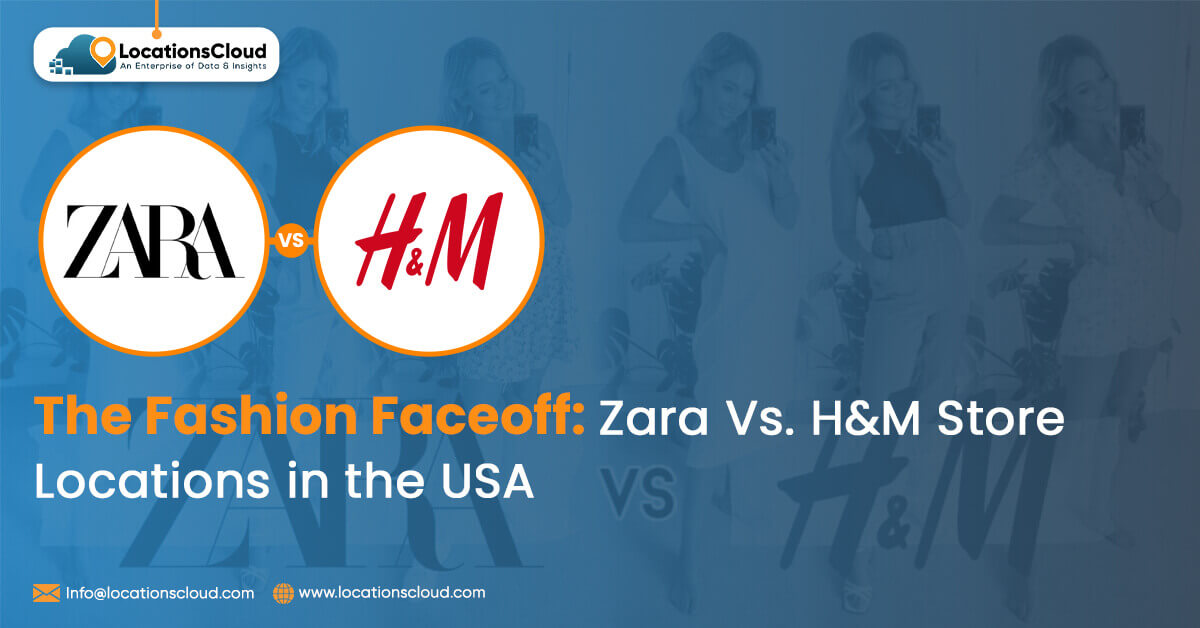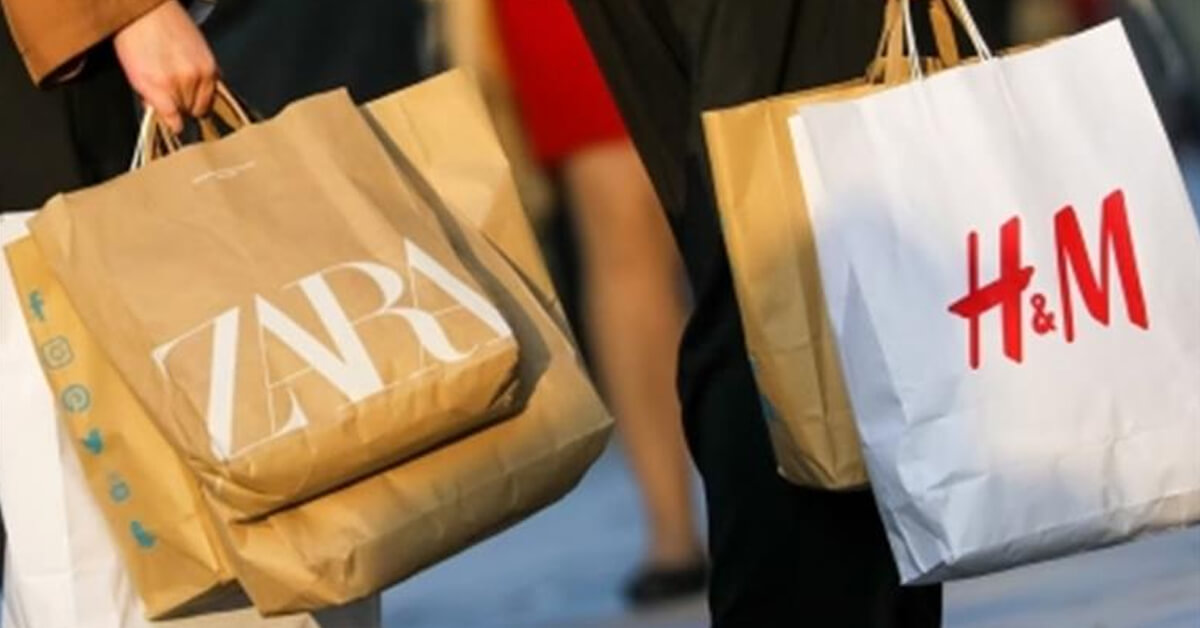
Dear Fashionistas, have you ever navigated through the vortex of ZARA and H&M? If you’re a fan of either brand or both, knowing where the nearest store is can make your shopping more accessible and fun. This blog looks into how they advertise their styles and their stores’ locations. We’ll also have a bit of fun while doing it. You might find a new favorite place to shop or realize which store is the most popular in the US fashion scene. Fasten your seatbelts and get ready to find out which store is leading the fashion trends in the USA.
ZARA Vs. H&M
ZARA and H&M are big names in fast fashion, always trying to grab shoppers’ attention. As these two stores compete across the vast expanse of American shopping centers, what’s their stance on the latest trends and cool styles?
ZARA Store
ZARA often picks trendy city hubs, upscale malls, and sleek cityscapes for their stores. It changes its styles quickly, making it feel like a fashion hotspot. ZARA hypes up the fear of missing out by bringing in new items often and dropping limited edition collections. They smartly market themselves using well-known fashion influencers and stylists, making their stylish designs and good quality speak volumes. The stores are nicely positioned in fashionable districts, offering a minimalist and welcoming shopping environment that encourages customers to make impulsive purchases.
It can be a nerve-wracking experience when your favorite item vanishes just when you are about to buy it – that’s ZARA in a nutshell!
H&M Store
H&M mainly focuses on offering affordable clothes to young, brand-aware shoppers. It stands out with bright and lively marketing, often teaming up with famous names to offer special collections at low prices. It uses diverse models and stays on top of the latest trends, offering a youthful, laid-back look. This contrasts with Zara’s more classy feel. H&M attracts customers by offering great deals, loyalty bonuses, and regular sales. It’s easily accessible, telling a story of sustainability and eco-friendly manufacturing, which appeals to younger customers. This helps to construct a positive brand image.
Just picture this – you’re living in a suburban town and searching for stylish clothes that don’t break the bank. Well, you can always find an H&M store! They’re practically everywhere and easy on your wallet, too!
Geographical Footprints: Zara Vs. H&M

Zara’s store locations leans toward upscale, major cities in the USA, while H&M opts for broader access, establishing its presence in urban, suburban, and smaller towns nationwide. Let’s analyze the spread of Zara and H&M’s store locations.
ZARA
Zara brands itself as a bit fancy and unique. They’ve more than 370 stores all over the US, many of which are in big cities like New York, Los Angeles, and Miami. They reinforce their image as fashion-forward trendsetters by establishing stores in high-end fashion districts and affluent neighborhoods. With a limited number of stores in premium locations, they create an aspirational ambiance that aligns with their brand. By doing so, Zara is pulling in customers who have purchasing power and are ready to pay for stylish, high-quality clothes. Their shops provide a calm, elegant atmosphere with fancy architecture, interior decoration, and lush presentation. Zara keeps quiet about how much each store makes, but according to insights, their stores in high-end places like Fifth Avenue in New York City, Beverly Hills malls, Lincoln Park in Chicago, and Rodeo Drive in LA get a lot of customers. These places attract many tourists and people with disposable income.
H&M
H&M brands itself as affordable and accessible. They have more than 500 stores in the US spread out across big cities, smaller towns, and suburban areas. H&M shops aim at a wide range of customers, unlike Zara. You can find freestanding H&M shops on the streets, and they’re always easy to find in shopping malls. They focus on customers who care about brands but also want to keep spending down. Plus, they’re not just based in big cities; they extend their stores to places beyond the urban areas. H&M store locations often become a crucial part of local areas. They support local projects, team up with local businesses, and ensure they’re there for customers who can’t quickly get to fancier fashion shops. This helps H&M build a strong reputation and gain loyal customers in those areas. H&M also tries to make itself part of their customers’ everyday lives by offering sales and special holiday discounts. This aligns with their goal of being open to everyone and keeping prices low. Similar to Zara, prominent stores in Times Square, New York, Michigan Avenue, Chicago, Miami, Los Angeles, Orlando, Hollywood Boulevard, Los Angeles, and other stores attract high traffic due to tourism and high spending power. H&M stores in busy locations offer a wide range of product lines like clothing and footwear for the whole family, including homeware and accessories, which generate significant revenue.
Beyond Brick & Motor
Beyond the physical stores, ZARA and H&M dominate the fashion industries in the USA with their markedly online store strategies. Here’s how they are taking over the customers with trendy clothing lineups from the comfort of home.
ZARA
Zara’s online shop is like their real-life ones – it’s very tidy, sleek, and has a strong sense of style. They use top-notch pictures to make their products look great. Zara aims to make you feel like you’re getting into exclusive stuff. They make personal recommendations based on your purchase history. Like in their physical stores, they keep updating their online product line to keep customers returning. They integrate online and real-life shopping, offering options like ordering online, picking up in-store, and making it easy to return stuff. This makes the whole shopping experience really smooth for customers.
H&M
H&M’s online platform caters to a wide range of audiences with a vast array of products, including basics, trend-setting pieces, and collaborations with popular designs. H&M shows deals, special promotions, and rewards for loyal customers on its website to push customers to keep shopping and buy more often. They use cool and interactive parts of the site, like the ability to virtually try on clothes, style suggestions, and reviews from other customers to make shopping fun. They also merge their social media pages and partnerships with popular influencers on the website to build community and engage customers.
Key Takeaways
Data-Driven Decisions: Both brands utilize customer data and analytics to inform their store placement strategies, identify high-demand areas, and optimize locations.
Number of Stores: H&M has over 500 stores, compared to Zara’s 370. However, Zara focuses on high-traffic, premium locations within major cities.
Store Size and Design: Zara’s stores tend to be smaller and more minimalist, emphasizing curated collections and a high-end experience, while H&M’s stores are often larger and more vibrant, offering a wider variety of products at accessible prices.
Future Trends: Both brands will likely adapt their store placement strategies to evolving online shopping habits and consumer preferences.
Conclusion
So, that’s a wrap on our deep journey through the Zara and H&M store locations in the USA. It’s clear that both these fashion giants have distinct strategies to attract their target audience. While Zara aims for the glamour of major cities, H&M spreads its wings far and wide into the suburbs and smaller towns. The next time you shop at Zara or H&M, whether in person or online, remember the business smarts behind them. Finding the right spot is the key to gaining more footfall traffic, but how do you do that? That’s exactly when LocationsCloud comes into the picture. We help you get retail store locations for all your business needs. Get insights into location-based data of different stores from across the globe and choose the one that best suits your requirements.


